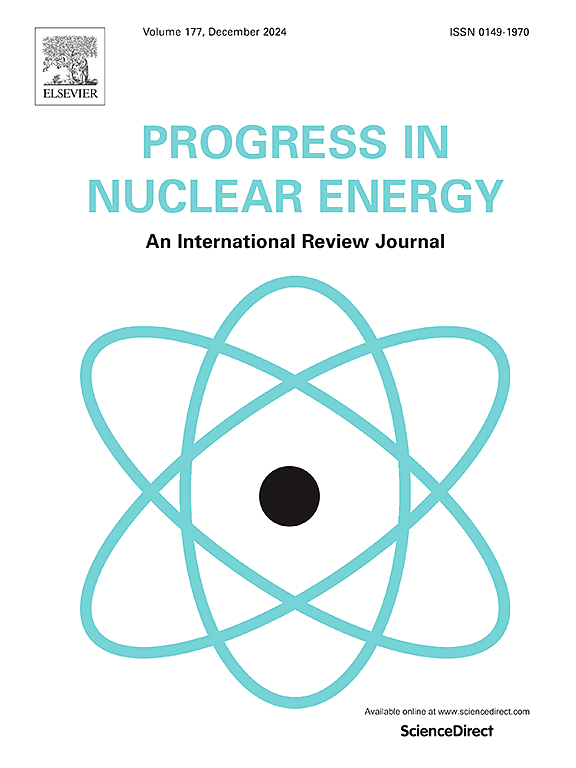A review on properties required for FB-CVD fabricated SiC for TRISO fuel production
IF 3.3
3区 工程技术
Q1 NUCLEAR SCIENCE & TECHNOLOGY
引用次数: 0
Abstract
In pursuit of achieving Net-Zero by 2050, there is a demand for a stable, sustainable source of green energy. The renewed focus on a ‘nuclear renaissance’ has highlighted the importance of demonstrating High Temperature Gas-cooled Reactor (HTGR) technology by the early 2030s. The performance of HTGRs hinges on the quality of their advanced fuel form known as TRi-structural ISOtropic (TRISO) coated fuel particles.
Although the fabrication of TRISO particles achieved success in the late 20th century, the lack of commercial HTGR systems limited the development of this advanced fuel form, particularly in the UK after the termination of the Dragon Project. The small number of active research facilities globally has resulted in a lack of fundamental mechanistic understanding of the fabrication process, contributing to uncertainties in scaling up production to an industrial level.
The commissioning of an active Fluidised Bed Chemical Vapour Deposition (FB-CVD) coater at the University of Manchester underscores the necessity for a preliminary literature study on fabrication parameters (deposition temperature, gas composition, flow rate, etc.) crucial for achieving high-quality TRISO products, while considering the economical utilisation of experimental uranic materials. This study is presented in two parts focusing on silicon carbide (SiC) and pyrolytic carbon (PyC) layers respectively.
In the present work, SiC properties (stoichiometry, microstructure, density) and process parameters (coating rate, efficiency) are scrutinised. Experimental findings from historical and recent FB-CVD coaters worldwide have been analysed to establish correlations between fabrication parameters, SiC properties, and process outcomes. Consensus exists regarding the influence of deposition temperature, though conflicting results are observed concerning the impact of H2/MTS. Other crucial fabrication parameters such as input gas flow rates remain to be definitively determined.
求助全文
约1分钟内获得全文
求助全文
来源期刊

Progress in Nuclear Energy
工程技术-核科学技术
CiteScore
5.30
自引率
14.80%
发文量
331
审稿时长
3.5 months
期刊介绍:
Progress in Nuclear Energy is an international review journal covering all aspects of nuclear science and engineering. In keeping with the maturity of nuclear power, articles on safety, siting and environmental problems are encouraged, as are those associated with economics and fuel management. However, basic physics and engineering will remain an important aspect of the editorial policy. Articles published are either of a review nature or present new material in more depth. They are aimed at researchers and technically-oriented managers working in the nuclear energy field.
Please note the following:
1) PNE seeks high quality research papers which are medium to long in length. Short research papers should be submitted to the journal Annals in Nuclear Energy.
2) PNE reserves the right to reject papers which are based solely on routine application of computer codes used to produce reactor designs or explain existing reactor phenomena. Such papers, although worthy, are best left as laboratory reports whereas Progress in Nuclear Energy seeks papers of originality, which are archival in nature, in the fields of mathematical and experimental nuclear technology, including fission, fusion (blanket physics, radiation damage), safety, materials aspects, economics, etc.
3) Review papers, which may occasionally be invited, are particularly sought by the journal in these fields.
 求助内容:
求助内容: 应助结果提醒方式:
应助结果提醒方式:


